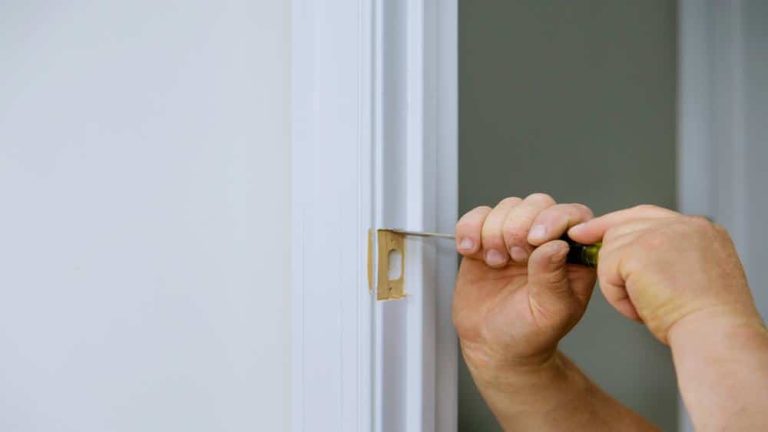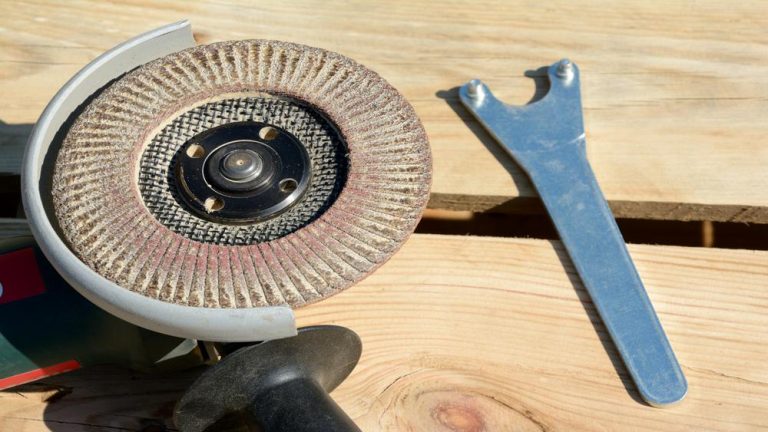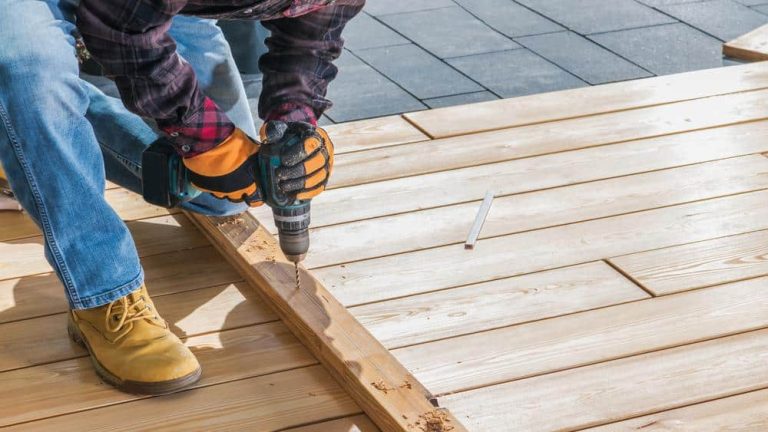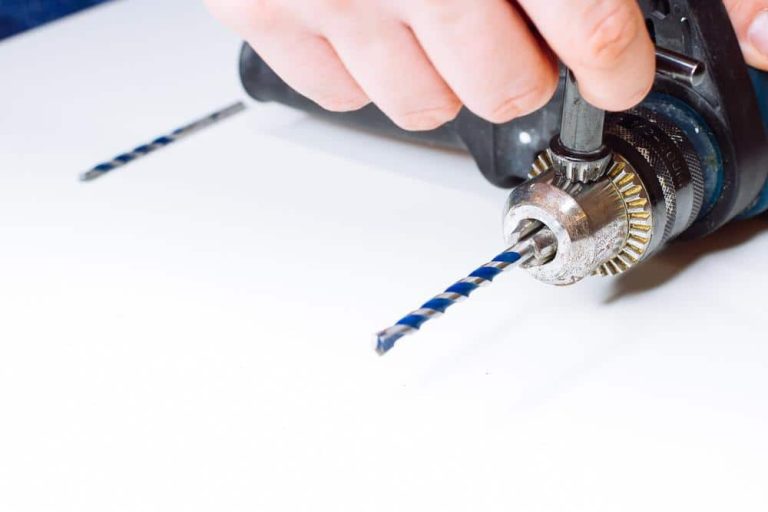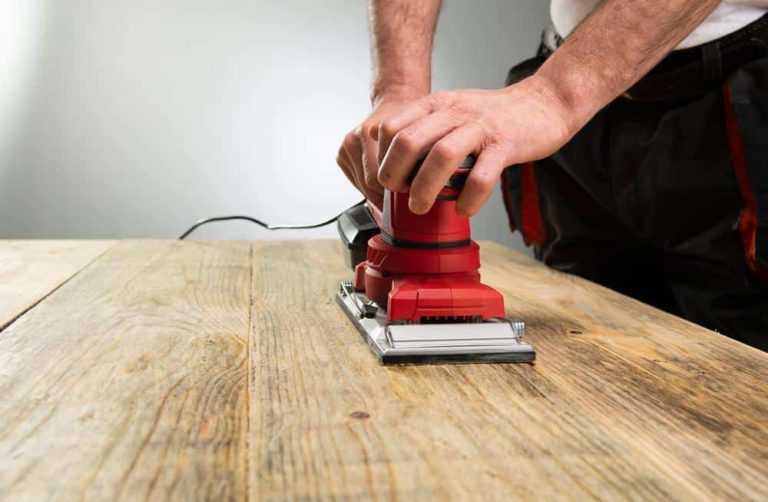Plastic is versatile in various applications, from household items to industrial components. Suppose you need to make a hole in the plastic for any reason. In that case, it’s important to do it properly to avoid cracking or damaging the material. This article will discuss how to make a hole in plastic without cracking it with different methods and techniques to help you make a hole in plastic without cracking it.
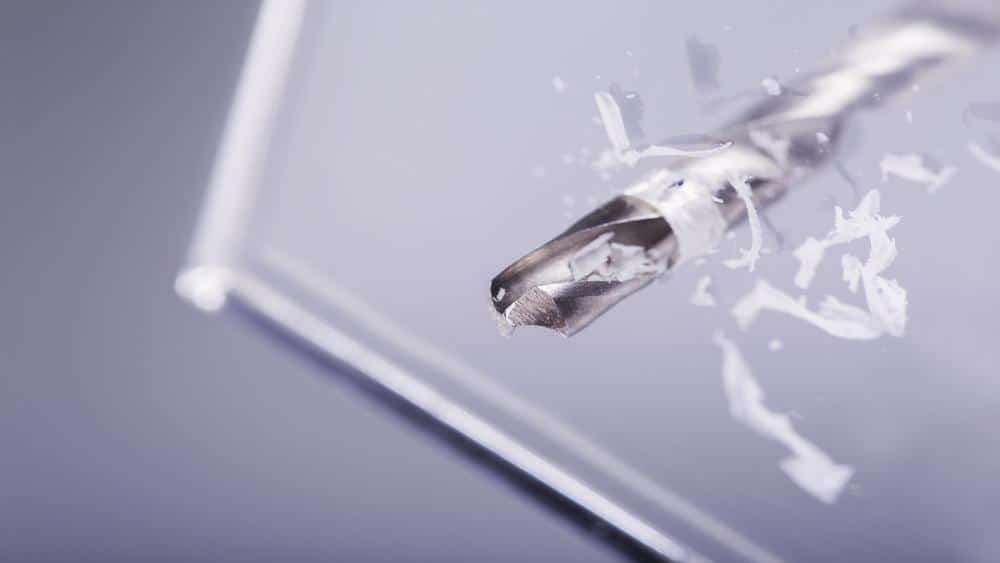
Why It’s Important Not to Crack the Plastic
The integrity of the Material
When working with plastic, preserving its integrity is paramount. A piece of plastic that remains undamaged maintains its original strength and structural properties. Cracks or fractures, even if minute, can become weak points in the Material. These weak points can not only diminish the plastic’s overall strength but also serve as initiation sites for further degradation or breakage under pressure or over time. Therefore, for longevity and to ensure that the plastic serves its intended purpose, it’s crucial to avoid any cracks during operations like drilling or cutting.
Aesthetic Reasons
The appearance of plastic materials, especially those used in visible areas like household items, gadgets, or even decor, is just as essential as its functional attributes. A clean, crack-free surface provides a professional and pleasing finish. Cracks or visible defects can detract from the overall look, making a product or item seem worn out, old, or poorly made. Whether you’re crafting a DIY project, repairing household items, or working on a professional assignment, achieving a seamless appearance ensures the final result is polished and of high quality.
Functional Implications
Beyond the structural and aesthetic considerations, cracks in plastic can have functional consequences. For instance, a cracked plastic container might leak, rendering it useless for storing liquids. Similarly, a plastic component with a crack may not fit properly in assemblies or might compromise the functionality of the equipment it’s a part of. Additionally, cracks can introduce vulnerabilities, like allowing moisture ingress in electrical applications, which can lead to component failures or, in the worst cases, safety hazards.
In essence, the importance of not cracking the plastic during any modification process must be considered. It ensures the Material remains reliable, looks good, and functions as intended.
Understanding Different Types of Plastics
Thermosetting vs. Thermoplastic
Plastics are primarily categorized into two main types based on their behavior when exposed to heat: Thermosetting and Thermoplastic.
Thermosetting Plastics: These are plastics that, once molded and cured, cannot be remelted or reshaped upon reheating. They undergo a chemical change during their forming process, creating a three-dimensional network of bonded molecules. Examples include phenolic resins, melamine, and epoxy resins. Due to their nature, thermosetting plastics can be more resistant to higher temperatures and often have a more rigid structure. When attempting to make a hole in such plastics, one must be cautious and use appropriate techniques to prevent damage.
Thermoplastic Plastics: Unlike thermosetting plastics, thermoplastics can be melted, reshaped, and then solidified multiple times without undergoing any significant chemical change. This property offers a level of flexibility in terms of manufacturing and reshaping. Common examples include polyethylene, polypropylene, and PVC. When working with thermoplastics, understanding their melting points and behavior under heat can guide you in choosing the correct method to make holes without cracking.
Characteristics of Common Plastics
With a myriad of plastic types available in the market, each comes with its unique set of properties and characteristics. Here are some commonly used plastics and their features:
- Polyethylene (PE): Widely used due to its versatility, PE is known for its resistance to chemicals and moisture. It’s often found in packaging materials, bottles, and bags. It’s flexible and has a low melting point.
- Polypropylene (PP): Similar to PE but with a higher melting point, PP is often used in automotive parts, containers, and carpets. It has excellent resistance to fatigue.
- Polystyrene (PS): Known for its rigidity, PS is commonly used in disposable cutlery, CD cases, and certain types of packaging. It is brittle and can crack easily, so care is needed when trying to puncture or modify it.
- Polyvinyl Chloride (PVC): Highly versatile, PVC can be rigid or flexible. It’s used in pipes, bottles, and even clothing items like raincoats. PVC is known for its durability and resistance to environmental elements.
- Polyethylene Terephthalate (PET): Commonly used for beverage bottles and other packaging, PET is known for its clarity and strength. It also boasts excellent barrier properties, making it ideal for storing carbonated drinks.
When seeking to make a hole in any plastic material, understanding its inherent characteristics can guide the selection of tools, techniques, and precautions to ensure a crack-free result.
Master the Art of Drilling Plastic: No Cracks, No Hassle!
You can use several methods to make a hole in the plastic, each with advantages and considerations. The most common methods include drilling, punching, melting, and cutting. Let’s explore each method in detail.
To make a hole in plastic without cracking it, you can follow these steps:
Materials you’ll need:
- Plastic piece
- Drill
- Appropriate drill bit
- Masking tape
- Safety glasses
- Clamps (optional)
- Lubricant (optional)
Steps
- Choose the Right Drill Bit: Select a drill bit specifically designed for drilling into plastic. Ideally, use a brad-point or a twist drill bit. The bit’s diameter should match the size of the hole you want to create.
- Secure the Plastic: If possible, clamp the plastic piece securely to a work surface. This will prevent it from moving during drilling and reduce the risk of cracking. If clamping isn’t possible, make sure the plastic is held firmly in place.
- Mark the Hole: Use a pencil or a marker to mark the exact location where you want to make the hole. This will help you maintain precision during drilling.
- Apply Masking Tape: Place a piece of masking tape over the area where you intend to drill. This tape will serve two purposes: it helps prevent the plastic from cracking, and it provides additional grip for the drill bit.
- Put on Safety Glasses: Safety should be a priority. Wear safety glasses to protect your eyes from any plastic debris that may fly off during drilling.
- Set the Drill Speed: Adjust the drill to a low or moderate speed setting. High speeds can generate excessive heat, which may cause the plastic to melt or crack.
- Begin Drilling: Position the drill bit on the marked spot and start drilling slowly and steadily. Apply gentle, consistent pressure. Avoid using excessive force, as this can cause the plastic to crack.
- Use Lubricant (if needed): If you notice that the plastic is heating up or melting, you can use a lubricant, such as water or cutting oil, to cool down the drill bit and the plastic. Apply a small amount of Lubricant to the drilling area as you work.
- Drill at a Slight Angle: If the plastic is thick, consider drilling the hole at a slight angle rather than straight down. This can reduce the risk of cracking, especially when working with thicker plastic.
- Monitor Progress: Pay close attention to the drilling process. As you get closer to completing the hole, reduce pressure to minimize the risk of cracking as the drill bit breaks through.
- Remove the Masking Tape: Once the hole is drilled, carefully remove the masking tape from the plastic.
- Deburr the Hole: Use a deburring tool or sandpaper to smooth the edges of the hole and remove any rough or sharp edges.
I. Tips for Drilling Holes in Plastic:
- Use a lower drill speed to reduce heat buildup and minimize the risk of melting the plastic.
- Place a piece of scrap wood under the plastic to prevent the drill bit from tearing through the material.
By following these steps and exercising caution, you can successfully make a hole in plastic without cracking it. Remember to work patiently and adjust your technique as needed based on the type and thickness of the plastic you’re working with.
Post-Drilling Best Practices
Smoothing Edges
Once you’ve successfully drilled a hole into the plastic without causing any cracks, it’s vital to ensure the edges of the hole are smooth. Jagged or rough edges can not only pose a safety risk, leading to potential cuts or scrapes, but they can also compromise the appearance and functionality of the plastic item.
Tools and Techniques:
- Sandpaper: Begin with a coarse grit to smoothen out larger imperfections and transition to a finer grit for a polished finish.
- Files: Use a rounded file if the hole is large enough, moving consistently around the circumference of the hole.
- Rotary Tools: Equipped with a sanding attachment, these can make the task faster, especially for harder plastics or larger holes.
Remember to frequently check the edges to ensure they’re becoming smoother and to avoid over-sanding, which could enlarge the hole or thin the plastic around it.
Cleaning the Area
Post-drilling, it’s common for plastic shavings or dust to accumulate around the drilled area. It’s essential to clean this up to ensure a tidy finish and prevent any debris from interfering with the plastic’s intended function.
Steps to Clean:
- Brush Away Debris: Using a soft brush, gently sweep away larger plastic shavings.
- Wipe with a Damp Cloth: This helps in removing finer particles and any static-charged dust.
- Air Blow: If you have access to compressed air, a short burst can effectively clear away any remaining debris.
Troubleshooting Common Problems
Fixing Minor Cracks
Despite all precautions, minor cracks can sometimes occur. It’s essential to address these promptly to prevent them from expanding.
Methods to Fix:
- Plastic Welding: Just like metal welding, plastic welding fuses the crack using a hot tool, melting the edges and sealing them back together.
- Adhesives: Specialized plastic adhesives or superglues can be used to bond the cracked surfaces together. Ensure the adhesive is suitable for the specific type of plastic you’re working with.
- Reinforcement: If the crack is at a location that will bear weight or stress, consider reinforcing the area with additional plastic or using a patch.
Avoiding Drill Bit Slips
Slipping off the drill bit can lead to unintended damage or misplacement of the hole. To avoid this:
- Pilot Hole: Start with a smaller bit to create a pilot hole, which guides the larger bit used later.
- Tape the Area: Placing a piece of masking tape or painter’s tape over the area you intend to drill can help prevent the bit from slipping.
- Use a Punch: A small indentation made using a punch can serve as a starting guide for the drill bit.
- Steady Pressure and Speed: Maintain consistent pressure without pushing too hard, and use a medium-speed setting on your drill.
Understanding these post-drilling practices and troubleshooting tips can ensure that your plastic drilling projects are not only successful but also have a polished and professional finish.
Check out our informative article if you want to learn how to make holes in plastic pots without a drill. Discover simple and effective techniques for creating holes in plastic pots, opening up new possibilities for your gardening endeavors. Don’t miss out!
Alternate Methods: When Not to Drill
Punching Holes in Plastic
Punching holes in plastic is a suitable method for thinner sheets or softer types of plastic. It requires a hole punch or a leather punch tool. Here’s a step-by-step guide to punching holes in plastic:
- Step 1: Place the plastic sheet on a solid surface, ensuring it is securely positioned.
- Step 2: Position the hole punch or leather punch tool over the marked spot.
- Step 3: Apply firm and steady pressure on the punch, using a hammer if necessary.
- Step 4: Repeat the process if larger or multiple holes are needed.
Tips for Punching Holes in Plastic:
- Start with a smaller punch size and gradually increase if a larger hole is required.
- Use a cutting board or a piece of scrap wood under the plastic to protect the surface underneath.
Melting Holes in Plastic
Melting holes in plastic is a method commonly used for softer plastic materials. It requires a hot soldering iron or a heated nail. Here’s a step-by-step guide to melting holes in plastic:
- Step 1: Heat the soldering iron or the nail until it becomes hot enough to melt the plastic.
- Step 2: Mark the desired hole location on the plastic.
- Step 3: Gently press the heated tip of the soldering iron or nail onto the marked spot.
- Step 4: Apply slight pressure and gradually let the heat melt through the plastic.
- Step 5: Once the hole is formed, remove the soldering iron or nail and let the plastic cool down.
Tips for Melting Holes in Plastic:
- Use the lowest possible heat setting to prevent excessive melting or deformation of the plastic.
- Perform this method in a well-ventilated area or wear a protective mask to avoid inhaling fumes.
Cutting Holes in Plastic
Cutting holes in plastic is a method suitable for thicker plastic sheets or objects. It requires a utility knife or a specialized plastic cutting tool. Here’s a step-by-step guide to cutting holes in plastic:
- Step 1: Mark the outline of the hole on the plastic using a marker or pencil.
- Step 2: Secure the plastic sheet or object firmly using clamps or a vice grip.
- Step 3: Score the marked outline using a utility knife or a plastic cutting tool.
- Step 4: Apply additional pressure and repeat the scoring process until the plastic is cut through.
- Step 5: Smooth the edges of the hole with sandpaper or a file if needed.
Tips for Cutting Holes in Plastic:
- Use a sharp blade or a specialized plastic cutting tool to ensure clean and precise cuts.
- Take your time and make multiple light passes instead of applying excessive force all at once.
Using a Rotary Tool with a Routing Bit
- Step 1: Mark the hole location: Begin by marking the center of the hole on the plastic using a marker or pencil.
- Step 2: Secure the plastic: To ensure stability, firmly secure the plastic sheet or object using clamps or a vice grip.
- Step 3: Attach a routing bit: Install a routing bit suitable for plastic onto a rotary tool. Ensure the bit is appropriate for the size and type of hole you want to create.
- Step 4: Set the depth: Adjust the depth of the routing bit to the desired thickness of the plastic. This helps prevent excessive pressure and reduces the risk of cracking.
- Step 5: Start routing: Turn on the rotary tool and gently guide the routing bit into the marked hole location. Apply steady and even pressure as you slowly route through the plastic. Let the tool do the work, avoiding excessive force.
- Step 6: Smooth the edges: Once the hole is complete, use sandpaper or a file to smooth any rough edges or burrs if necessary.
Tips for Cutting Holes in Plastic
Wear appropriate safety gear, such as safety goggles and gloves, and work in a well-ventilated area when using a rotary tool. Always follow the manufacturer’s instructions for both the tool and the routing bit.
These alternative methods provide options for drilling holes in plastic without the risk of cracking. Choose the method that suits your specific needs and materials.
Frequently Asked Questions(FAQ)
Can drill bits for plastic be used to drill other materials?
We wouldn’t advise that drill bits you’ve purchased for plastic be used on wood, masonry, or vice versa.
How to clean a plastic drill when it becomes sticky?
Try cleaning it with denatured alcohol (methylated spirits) or water, letting it dry, and then dusting it with talcum powder, cornstarch, or baking soda.
What drill bit is best for plastic?
Drilling holes in the plastic are best made using spur-point drill bits (dowel bits). The smoothness of the cut is ensured by the bits’ points and angle in front of the cutting surface. To ensure a clean exit, it’s best to go at a slower pace as you leave.
Can I Use a Wood Drill Bit on Plastic?
It’s pretty possible to drill a hole through plastic using any power drill. But, without the suitable drill bit at your hand, you’d chip or break the material throughout the drilling process. So, before you begin your task, make sure that you have the correct drill bit for drilling a hole in the plastic.
Will plastic wear down my drill bits?
More rigid plastics will wear out your drill a little more quickly. However, get a decent drill bit. It shouldn’t begin to feel “dull” like you might anticipate a masonry bit after lots of drilling into brick or concrete. The sharpness of the bit’s tip is critical for drilling effectively through the plastic.
Will a spade bit drill through plastic?
It’s best to take your time and be very cautious when using a spade bit to drill into plastic. The edges may need to be polished when you are done.
YouTube Video Credit: Gardening Upbeat
Conclusion
In conclusion, how to make a hole in plastic without cracking it requires carefully considering the material’s properties and the appropriate tools and techniques. You can successfully create a hole in plastic while maintaining its integrity by choosing the right method, such as drilling, punching, melting, or cutting. Remember to prioritize safety by wearing protective gear and working in a well-ventilated area.





